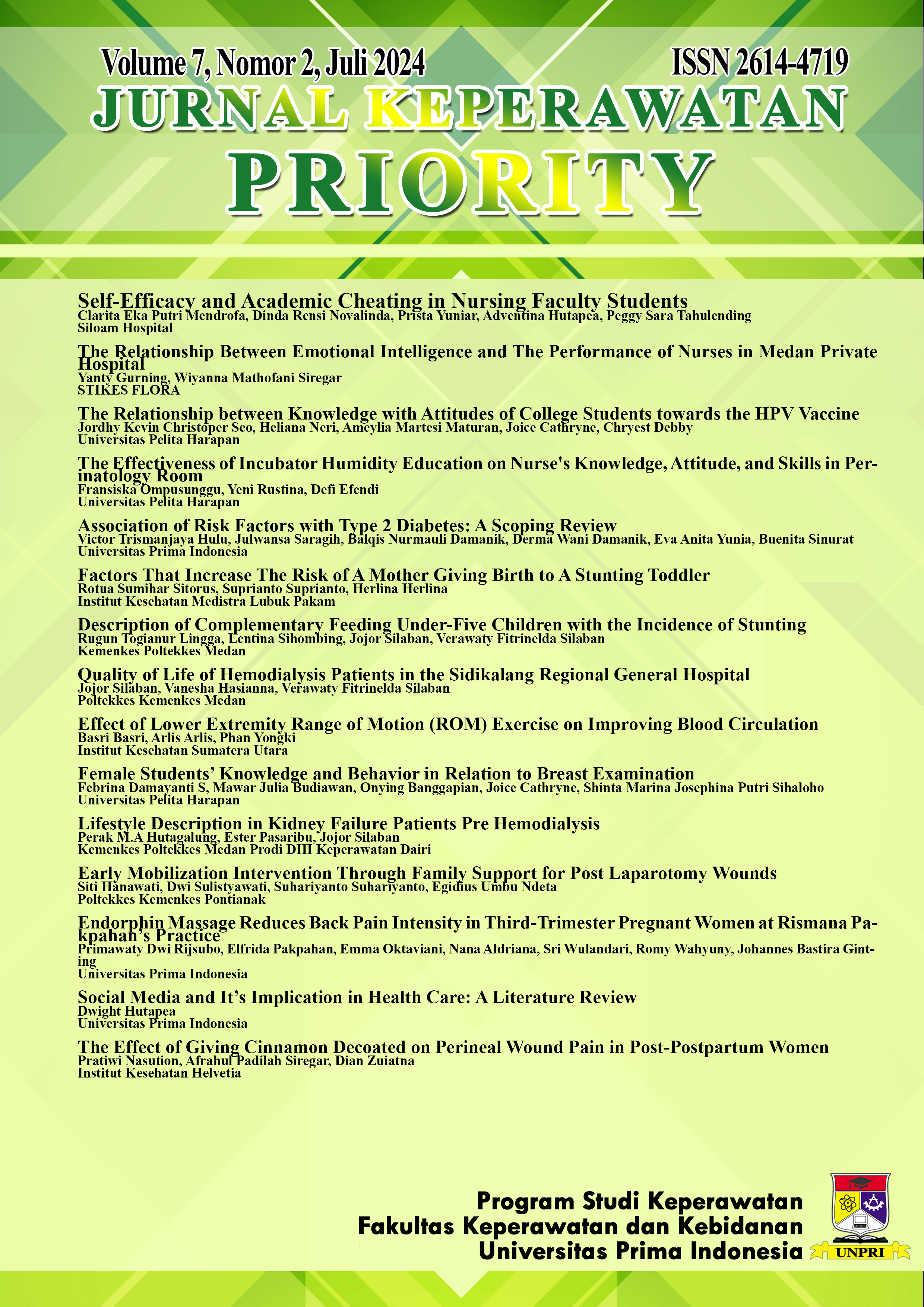Effect of Lower Extremity Range of Motion (ROM) Exercise on Improving Blood Circulation
DOI:
https://doi.org/10.34012/jukep.v7i2.5414Keywords:
range of motion (ROM), foot blood, circulation, diabetes mellitus, type 2Abstract
Range of Motion Exercise (ROM) are used to increase peripheral perfusion with the aim of facilitating adequate oxygen diffusion and adequate supply of nutrients to the wound area and for the process of repairing wound tissue in the legs of diabetes mellitus patients. The aims to determine the effect of lower extremity range of motion (ROM) training on improving blood circulation in the legs of patients with type 2 diabetes mellitus at Aceh Singkil District Hospital. This Study design uses quasi experimental using a one group pre-test post-test design approach. The Study sample was 35 respondents. Data were analyzed using the Wilcoxon sign rank test. The results of the study showed that there was a significant effect on the blood circulation in the legs of type 2 diabetes mellitus patients before and after being given lower extremity Range of Motion (ROM) training with a value of p = 0.000, the average value before lower extremity ROM training was 1.28 with a minimum value of 1.00 and maximum 2.00. and after being given lower extremity ROM exercises the average value was 1.94 with a minimum value of 1.00 and a maximum value of 2.00. From the results of this Study, it is hoped that nurses at Aceh Singkil District Hospital can apply lower extremity exercises to reduce the risk of complications from peripheral vascular disease, especially in diabetes mellitus sufferers.
Downloads
Published
How to Cite
Issue
Section
License
Copyright (c) 2024 Basri Basri, Arlis Arlis, Phan Yongki

This work is licensed under a Creative Commons Attribution 4.0 International License.
Authors who publish their manuscripts through the Journal of Keperawatan Priority agree to the following:
- Copyright to the manuscripts of scientific papers in this Journal is held by the author.
- The author surrenders the rights when first publishing the manuscript of his scientific work and simultaneously the author grants permission / license by referring to the Creative Commons Attribution 4.0 International License to other parties to distribute his scientific work while still giving credit to the author and the Journal of Journal Keperawatan Priority as the first publication medium for the work.
- Matters relating to the non-exclusivity of the distribution of the Journal that publishes the author's scientific work can be agreed separately (for example: requests to place the work in the library of an institution or publish it as a book) with the author as one of the parties to the agreement and with credit to sJournal ofJournal Keperawatan Priority as the first publication medium for the work in question.
- Authors can and are expected to publish their work online (e.g. in a Repository or on their Organization's/Institution's website) before and during the manuscript submission process, as such efforts can increase citation exchange earlier and with a wider scope.

















